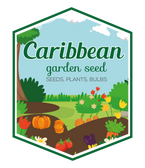
Virginia Bluebells flowers seed, Mertensia virginica, Native Perennial !
- Get free shipping to lower 48 states on orders $54.95+ (Most Items), excluding live plants, plant bulbs, and black plastic nursery crate.
- Most orders are processed by the next day !
- Safe Seed Pledge
- Select your desired size and/or color from the available options.
Virginia Bluebells,Also known as: Virginia Cowslip, Lungwort Oysterleaf, Roanoke Bells
Description of Virginia bluebells:
Virginia bluebells grow 2 feet tall and form dense colonies in wooded areas in early spring. Loads of two-toned bell-shaped flowers hang down from the stems in large clusters. Flower buds are pink and turn lavender-blue as they age. Plants spread by seedlings and, over time, will colonize a large area that is to their liking. Foliage yellows and disappears after plants quit flowering.
Virginia bluebells are a delightful spring wildflower with soft, cool green foliage and two-toned pink and blue flowers. They make a beautiful carpet under deciduous trees and are the perfect foil for daffodils. Because bluebells go dormant and disappear after flowering they are referred to as "spring ephemerals."
Virginia bluebell (Mertensia virginica), also known as Virginia Cowslip, is a charming wildflower that, under the right conditions, will be right at home in the home landscape. Although the early spring blooms of Virginia bluebells are short-lived, the clusters of blue, bell-shaped flowers will take center stage until summer bloomers take their place. Start early, and plant Virginia bluebells by seed, and they'll be ready for their outdoor home in spring.
How to Grow Virginia Bluebells
Things You'll Need
Virginia bluebell seeds
Plastic bag
Peat moss
Seedling tray
Commercial potting soil
Spray mister
Instructions
1
Plan to start Virginia bluebells seeds at least four months before the last expected frost for your area. Virginia bluebells will have a better chance at success if you allow them plenty of growth time before planting them outdoors.
2
Fill a plastic bag with damp peat moss and bury the Virginia bluebell seeds in the middle of the peat moss. Put the bag in the refrigerator and leave it for 40 days. This process, called stratification, mimics the natural process where seeds are dormant in winter and germinate in spring.
3
Fill a seedling tray with commercial potting mixture and scatter the Virginia bluebell seeds on the surface of the potting mixture. Cover the seeds with a thin layer, about 1/8 inch, of potting mixture. Spray the seeds lightly with a fine mist.
4
Put the seedling tray in a room where the temperature will be maintained at 65 to 70 degrees F. The seedling tray should be in bright light, but not directly in a sunny window. Turn the tray occasionally so all the Virginia bluebell seeds will get an equal amount of light and won't lean towards the light.
5
Thin the seedlings when they're 1 to 2 inches tall. Clip off the weaker, spindly seedlings with scissors. Don't pull the seedlings because you can loosen the soil and damage the seedlings you intend to keep.
6
Transplant the Virginia bluebell seedlings into individual 3- or 4-inch plastic containers. Any containers will work, as long as they have drainage holes in the bottom.
7
Return the Virginia bluebell seedlings to bright, indirect sunlight and keep them moist. Plant them outdoors in spring after you're sure there will be no more frosty nights.
8
Decide where to plant Virginia bluebells because once they're planted, they don't like to be moved. Plant bluebells in well-draining soil, where they'll get morning sunlight, but will be protected from hot afternoon sunlight. Bluebells won't do well with a lot of foot traffic, so plant them away from paths or sidewalks.
9
Hoe the soil to a depth of at least 8 inches. To improve drainage, add 2 to 3 inches of compost or peat moss into the top of the soil.
10
Use a trowel to dig a small hole for each Virginia bluebell seedling. Plant the seedlings in the holes, and tamp the soil down lightly. Water the Virginia bluebells seedlings lightly immediately after planting.
11
Water the Virginia bluebells regularly for their first growing season, but don't water excessively and don't water until the top of the soil is dry to the touch. The soil should be damp, but never soggy.
Tips & Warnings
Established Virginia bluebells can be divided to create new plants. However, be sure to wait until fall or early winter when the plants aren't in active growth. Attempting to transplant Virginia bluebells during active growth can kill the plant
Harvesting Virginia Bluebells: These blossoms do not perform well as cut flowers, and are best enjoyed outdoors.
Saving Virginia Bluebells Seeds: Soon after blooming, each flower will produce small, shriveled fruits that contain the seeds. For best results, plant immediately; alternatively, store them in the refrigerator until planting several weeks before the last frost of spring. For longer storage, allow the seeds to dry in a protected place before storing them in the refrigerator.
LET OUR CUSTOMER SPEAK FOR US

![[Seeds] - Caribbeangardenseed](http://caribbeangardenseed.com/cdn/shop/files/gift-card-gift-card-1_1024x1024_dfa857db-9150-4315-a362-7f0bb3fb9c47_60x28.png?v=1722895789)






